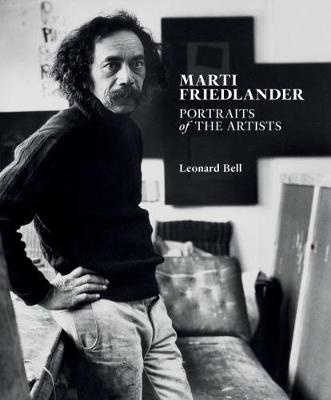MARTI FRIEDLANDER: PORTRAITS OF THE ARTISTS
Leonard Bell
Auckland University Press
REVIEWED BY JESSIE NEILSON
Portraits of the Artists is part of the Gerrard and Marti Friedlander Creative Lives Series. Rather than tell a story through words, this work focuses on displaying both familiar and previously unseen photographic images of New Zealanders in the arts from over a number of decades. The images themselves, as well as their relationship to the photographer, do most of the talking. All are the work of Marti Friedlander herself, long acknowledged as one of our most respected and accomplished photographers.

Like an earlier monograph in the series, Strangers Arrive, the overall collation is by art historian Leonard Bell, who provides an introduction, critical accompanying notes to each of the subjects, and an epilogue.
Friedlander (1928-2016) had extensive networks within New Zealand's creative communities, and with her curiosity she preferred to observe from the corners rather than become embroiled. This watchful eye allowed her a degree of professional distance. How her subjects presented, in stance and attitude, was largely her prerogative, as for instance, painter Gretchen Albrecht who was dressed in her studio in the very un-painterly garb of a floor-length floral skirt.
However, as these photos display, the degree of familiarity and trust between subject and photographer shines through. In the image of te reo lecturer and Human Rights Commissioner Merimeri Penfold it is her warmth and wisdom that strikes the viewer; in fellow immigrant and photographer Ans Westra's, it is a quiet tolerance that emerges.
Yet in others the subjects are almost unwilling to engage, their silence and reticence clearly visible. For a young Maurice Gee, as quotes by Friedlander explain, this was due to his natural shyness, particularly at that stage of life. The portrait of Estonian-born photographer Georg Kohlap conveys deep suspicion, whether genuine or performed, while that of cultish art lecturer and artist, Rudi Gopas, with his highly dubious past, challenges Friedlander, even mocking.
Though the photos tell much of the story, generous commentary by Bell supplements each figure. Though decades younger than Friedlander, Bell has the advantage of moving in similar artistic and literary circles, and thus they share many acquaintances.
Where effusive comment is given by Bell on a particular individual, so too does a disclaimer make their friendship clear. In the case of individuals about whom little is now known, Bell offers likely speculation around their possible movements or preoccupations.
Bell also points out a number of figures who would be worthy recipients of future full-length studies, such as artist Keith Patterson, flamenco-playing, and for a long time based in Spain, who used sawdust (from olive and manuka) and marble dust in his works; painter Suzanne Goldberg, whose work, once lauded, seemed to fall out of favour; and Rei Hamon (Te Aitanga-a-Mahaki), with his ‘‘pointillism’’, influenced by Continental styles.
Friedlander also liked to photograph couples, for in their body language one could read clues and draw conclusions. Unlike those of solo figures, where there was communication between photographer and subject only, here the tension was in three directions, and in this interplay was formed a narrative. Light, colour, mood and staging were all used to create specific situations and engagement.
Friedlander's work encompassed many artists, including potters, sculptors and kite-makers; writers, poets and historians; politicians; dancers and folk singers; wine-makers; landscape gardeners and many others. There were radical feminists and social activists and innovators in broad fields. Some were passing acquaintances while others like C. K. Stead were long-standing friendships.
This work opens into a world of curiosities, where each of these people hold keys to ambitious ventures, creation, and their own back stories. Portraits of the Artists is a collection of huge substance over which one can pour and then revisit, as it records passion in many fields of the arts, from figures well known, to those previously almost slipping from recorded history.
Jessie Neilson is a University of Otago library assistant












